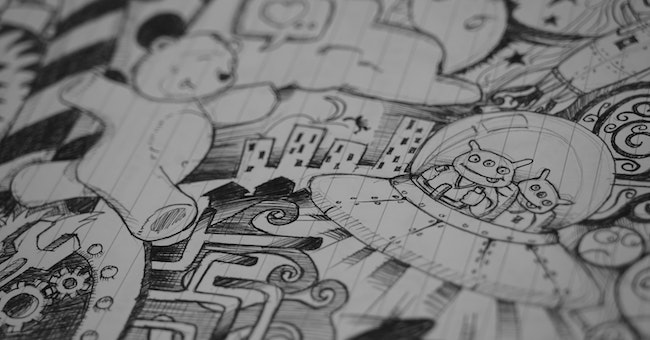Exploring Why is 3D scanning technology important

Introduction
In the realm of modern technology, few innovations have captured the imagination and potential of industries as significantly as 3D scanning. The ability to capture real-world objects and environments in three dimensions with remarkable accuracy has revolutionized various fields, from manufacturing and architecture to healthcare and entertainment. In this article, we'll delve into the fascinating world of 3D scanning, exploring its principles, methods, applications, and the incredible impact it has on shaping our future.
Understanding 3D Scanning
3D scanning is a process that involves capturing the shape and appearance of real-world objects or environments to create digital 3D models. It utilizes various technologies and techniques to capture data points from the surface of an object and transform them into a digital representation. These digital models can then be manipulated, analyzed, and used for a wide range of applications.
Methods of 3D Scanning
Several methods are employed in the process of 3D scanning, each tailored to different types of objects, surfaces, and levels of detail required. Some of the most common methods include:
Laser Triangulation: This method involves projecting a laser beam onto an object and measuring the distortion of the reflected beam. By calculating the distance between the scanner and the object's surface, a 3D point cloud is generated.
Structured Light: Utilizing patterns of light and dark to map the contours of an object's surface, structured light scanning is efficient for capturing complex shapes with high accuracy.
Photogrammetry: By capturing multiple photographs of an object from different angles and using software to analyze the overlapping points, photogrammetry generates 3D models. This technique is particularly useful for outdoor environments and archaeological sites.
Time-of-Flight: This method calculates the time it takes for light or laser pulses to travel to an object and return to the sensor. Time-of-flight scanners are often used for larger objects and long-range scanning.
Contact-based Scanning: Involves physically touching the object with a probe to collect data points. This method is precise but may be time-consuming for complex surfaces.
Applications of 3D Scanning
The applications of 3D scanning are incredibly diverse and span across various industries. Let's explore some of the most prominent applications:
Manufacturing and Prototyping
In manufacturing, 3D scanning plays a crucial role in quality control, reverse engineering, and prototyping. By creating digital models of physical objects, manufacturers can identify defects, deviations, and inconsistencies in their products. Moreover, the technology allows for the precise replication of prototypes, enabling companies to iterate designs more efficiently.
Architecture and Construction
3D scanning has transformed the architectural and construction industries. Architects can capture existing structures and environments, creating accurate models for renovations or expansions. Construction teams benefit from accurate measurements and clash detection, reducing errors and improving project efficiency.
Healthcare and Medicine
In healthcare, 3D scanning has found applications in orthopedics, dentistry, and prosthetics. Customized implants and prosthetic devices can be designed using patient-specific scans. Additionally, 3D scanning assists in surgical planning and provides surgeons with detailed insights into patients' anatomy.
Cultural Heritage Preservation
Cultural heritage preservation has greatly benefited from 3D scanning. Artifacts, sculptures, and historical sites can be scanned to create digital archives, preserving their details and allowing for virtual exploration and study.
Entertainment and Gaming
The entertainment industry uses 3D scanning for creating lifelike characters and environments in movies, video games, and virtual reality experiences. Scanning real-world locations and objects enhances the realism of virtual worlds.
Fashion and Design
In the world of fashion, 3D scanning aids in creating customized garments that fit perfectly. It enables designers to create patterns that match the body's contours, leading to better-fitting clothing.
Aerospace and Automotive
Aerospace and automotive industries use 3D scanning for quality control, design optimization, and maintenance. Parts can be accurately measured and inspected to ensure they meet stringent requirements.
The Future of 3D Scanning
As technology continues to advance, the future of 3D scanning holds exciting possibilities. Here are some trends and developments to watch for:
Miniaturization of Scanning Devices
3D scanning devices are becoming smaller and more portable, allowing for increased accessibility and versatility. Handheld scanners are becoming popular for on-site scanning and quick data capture.
Integration with Augmented Reality (AR) and Virtual Reality (VR)
3D scanning is poised to play a significant role in the integration of AR and VR experiences. By capturing real-world objects and environments, these technologies can create immersive digital worlds that interact seamlessly with the physical world.
Artificial Intelligence and Automation
Artificial intelligence and machine learning are being integrated into 3D scanning processes. These technologies can assist in automating the scanning process, analyzing data, and even predicting potential issues.
Medical Advancements
In the medical field, 3D scanning is evolving to provide real-time insights and diagnostic tools. The ability to capture detailed anatomical information can enhance surgical planning and improve patient outcomes.
Industry-specific Solutions
Industries such as fashion, healthcare, and architecture are likely to witness tailored 3D scanning solutions that address their unique challenges and requirements.
Recommended Online Resource for 3D Scanning
Industrial 3D Scanning and Printing with 3DChimera (FFF & SLS)
Discover the cutting-edge realm of Industrial 3D Scanning and Printing with 3DChimera (FFF & SLS). This course offers a comprehensive introduction to 3D scanning, CAD data reconstruction, Carbon Fiber FFF printing, industrial FFF printers, SLS printing with Sintratec S2, SLS post-processing, and precision CNC milling with soft jaws. Participants will master the essentials of 3D scanning and printing, equipping them to apply these skills confidently to their own projects.
Course highlights:
Comprehensive Introduction: Dive into the world of 3D scanning and printing, exploring key concepts from reconstruction to precision manufacturing.
Cutting-Edge Techniques: Master advanced techniques, including Carbon Fiber FFF printing, SLS printing, and CNC milling with soft jaws.
Expert Guidance: Learn from 3DChimera, a leader in industrial 3D solutions, and gain insights into innovative technologies and applications.
Hands-On Applications: Apply skills to real-world projects, from CAD data reconstruction to creating parts using FFF and SLS printing.
Diverse Career Paths: Open doors to careers as a 3D Scanning Technician, Printer Operator, CAD Designer, or Post-Processing Technician.
Versatile Education Paths: Pursue degrees in Mechanical Engineering, Computer Science, Industrial Design, or Manufacturing Engineering to specialize in this dynamic field.
The Ultimate Guide to 3D Scanning | FULL WORKFLOW
Uncover the intricacies of 3D scanning with "The Ultimate Guide to 3D Scanning | FULL WORKFLOW." This comprehensive course takes you through each step of the process, ensuring a holistic understanding of the art. Delve into chapters covering diverse topics, from capturing the perfect photo to advanced troubleshooting techniques. Learn how to shoot in stereopair, optimize lighting, and process images meticulously. Align, mesh, texture, and export your scans flawlessly. With hands-on guidance and expert insights, this course equips you to master the entire 3D scanning workflow and create captivating scans.
Course highlights:
Comprehensive Workflow: From initial shooting to advanced troubleshooting, learn the complete 3D scanning process.
Stereopair Mastery: Gain expertise in shooting and utilizing stereopair images for enhanced accuracy.
Optimal Lighting Techniques: Explore methods for achieving optimal lighting conditions to capture detailed scans.
Precise Alignment: Learn to align images flawlessly and set reconstruction regions for precise results.
Texture Enhancement: Discover how to add texture to your scans for a realistic and captivating final output.
Is 3D Scanning Actually Useful? - Testing it with Revopoint RANGE
Discover the practicality of 3D scanning through testing with the Revopoint RANGE scanner. Explore the capabilities of this larger scanning solution designed for bigger objects that mini scanners can't handle. Learn how the expansive scanning range enables efficient capture of extensive surfaces. Get insights into the Kickstarter campaign for the Revopoint RANGE scanner and explore its potential applications.
Course highlights:
Practical 3D Scanning: Explore real-world utility of 3D scanning.
Revopoint RANGE: Uncover a solution for scanning larger objects.
Enhanced Scanning Range: Efficiently capture extensive surfaces in one go.
Kickstarter Campaign: Join Revopoint RANGE campaign for advanced scanning.
FAQs
Q: What are the types of 3D scanning technologies?
A: There are several types of 3D scanning technologies, including laser-based scanning, structured light scanning, time-of-flight scanning, and photogrammetry. Each technology has its own strengths and applications.
Q: What are the applications of 3D scanning?
A: 3D scanning finds applications in industries like manufacturing, healthcare, entertainment, architecture, and more. It's used for reverse engineering, quality control, medical imaging, virtual reality, and creating digital replicas of artifacts.
Q: How accurate is 3D scanning?
A: The accuracy of 3D scanning depends on factors like the scanning technology used, the resolution of the equipment, and the size of the object being scanned. High-end scanners can achieve sub-millimeter accuracy.
Q: Can 3D scanning capture color and texture?
A: Yes, some 3D scanning methods can capture color and texture information along with the geometry of the object. Photogrammetry and structured light scanning are examples of techniques that can capture color information.
Q: What is point cloud data?
A: Point cloud data is a collection of 3D coordinates (points) in space that represent the surface of an object. This data forms the foundation of a 3D model generated through scanning.
Conclusion
3D scanning has opened up a world of possibilities across industries, revolutionizing the way we design, create, and interact with our surroundings. From manufacturing to healthcare and beyond, the technology's impact is undeniable. As it continues to evolve and integrate with other emerging technologies, the future of 3D scanning holds untold potential, promising further advancements that will shape our world in remarkable ways.





